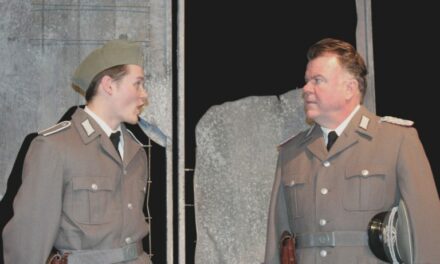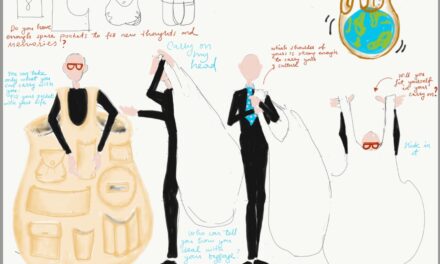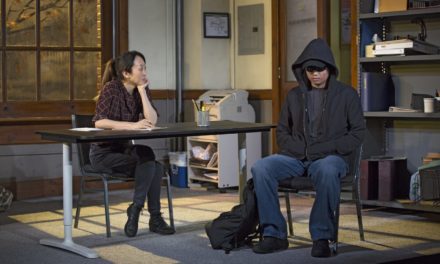The Shoah has a well defined meaning in contemporary history but clearly, choosing to produce such a work dominated by the theme of these child refugees from the victims of Nazism, highlighted by the exceptional musical talent of the woman who creates the event, is a courageous undertaking that emerges as a perfectly relevant topic in today’s reality. Given the forced displacement of multiple populations in many parts of the world, as well as the plight of Latin-American children being separated from their parents in desperate situations of survival south of our Canadian border, we are presently confronted with victims of ultra-nationalistic power-hungry collectivity’s whose short-term memories show us that they have not learned very much from the past. The Pianist of Willesden Lane is an excellent history lesson that should revive the curiosity of younger people.
This question kept nagging at me as the captivating tale of Lisa Jura unfolded on the stage of the Segal Centre in Montreal. I watched the beautiful and talented actor and concert pianist Mona Golabek reliving the experience of her Viennese born pianist mother Lisa Jura through the rich sounds she produced on her Steinway piano, performing on that lushly elegant set hung with red velvet drapes, speckled with gold rimmed mirrors and picture frames.
As an integral part of the scenography these screens became windows to the past, delving into the reality of World War II as photos, moving journalistic images, dramatic lighting effects, and enormous roaring sounds of sirens, guns, airplanes buzzing overhead, brought out strong episodes of the war that must have revived some memories.
More precisely, the creators of the event followed the chronology of young Lisa Jura’s life which began when the family watched in horror as she was chosen, to become part of the Kindertransport rescue operation after the talented young 14 year-old pianist, was caught up in the 1938 tragedy of Kristallnacht. This was the beginning of the systematic destruction of a whole culture and its people and as Lisa and her family watched as their father was beaten up by the SS in the streets, the parents were allowed to chose a single one of their three children to be taken to England for the duration of the war.
Lisa, after passing through many homes and many encounters, finally found refuge with a large group of children in a place near London called Willesden Lane. Here without ever knowing if she would see her family again, she resisted and held tightly to the promise she made to her mother that she would continue playing the piano and eventually perform Grieg’s Piano Concerto in a great concert hall as an accomplished pianist after being accepted in the Royal Academy of music following a long, exciting, exuberant and very harrowing audition that was one of the high points of the evening. This all came to pass in London despite air raids and bombings and much danger .
Mona Golabek seamlessly became her mother during her uncanny ninety-minute transformation into the young Viennese girl who emerged before us from the bustling urban culture of the Viennese ringstrasse and café society, activated on stage by Hershey Felder, Trevor Hay, and Lee Cohen. It was set in the soundscape of a magnificent orchestral background and the results filled the theatre with a majestic exchange of voices as all the instruments spoke to each other so elegantly.
Thus, the young girl performed a series of intense, , highly dramatic and technically demanding piano pieces as a full-blown orchestra poured out around her even as she melted into soft moments of delicate feeling, capturing the nuances that played out in this emotional landscape.
More to the point, the integration of a musical instrument gave this encounter many levels of meaning. Mme Golabek, playing on the Steinway concert piano produced a purity of nuances that transformed her instrument into a living partner who not only heightened the emotion of her performance but also added a visual expression to all that was happening in that space.
The delicate symbolist sounds of Debussy’s Claire de lune enveloped her and calmed her amidst all the chaos and fear trumpeting around her; the dashing Bach Partita produced staccato finger work that became the frantic incarnation of the workings of the stitching as we could actually see the loom in the factory spin out the material for Princess Elizabeth’s dress as their sewing hands raced around the loom with the help of the music. Then the Grieg Piano Concerto thundered throughout the house, giving more substance to the terrifying experience of the bombs as they exploded around the children when Lisa refused to descend to the bomb shelter and insisted on remaining with her piano on the upper level of their house on Willesden Lane…Her rendition of Grieg’s Piano concerto defied the enemy, their bombs raining down on London, crashing through the roof, making all disappear in a great cloud of dust plunging all into darkness.
Another great moment was her final concert after she had finished her courses at the Royal Academy of Music under the direction of the great living pianist and teacher Myra Hess. The faces of her family and her teachers came alive in the mirrors hanging on the velvet draped walls of the Academy but then her mood changed. Mona Golabek entertained the children with Beethoven, Chopin, even Rachmaninoff and they all cheered but she also became terribly somber. when she realized that her family was not able to respond to her letters and she would have to play this great work without their presence.
What brought us much closer to the life of Lisa Jura were the specific references to the dignity of her parents in the wake of the anti Semitism in Austria and Germany just as World War II was getting underway, and then the way this performance highlighted the perspective of a young girl who dared to defend her promise to her parents to always value her great gift of music. And it was her belief in the power of creativity that helps her soar above the sordid reality even though it appeared more and more obvious that she would never see her family again. And yet, at the height of her success in England where she had been sent with the Kindertransport to escape the war, there is a surprise which brings great joy to us all.
This extremely courageous performance reached out to all victims of senseless disregard for human justice, and somehow made the world a worthier place to be.
The Pianist of Willesden Lane played at the Segal Centre in Montreal September 8 to 29, 2019
A The Samantha F. Voxakis, Karen Racanelli, And Robert M. Birmingham Production. Based on the book The Children of Willesden Land by Mona Golabek and Lee Cohen
This article was originally published on http://capitalcriticscircle.com. Reposted with permission. Read the original article.
This post was written by the author in their personal capacity.The opinions expressed in this article are the author’s own and do not reflect the view of The Theatre Times, their staff or collaborators.
This post was written by Alvina Ruprecht.
The views expressed here belong to the author and do not necessarily reflect our views and opinions.


















